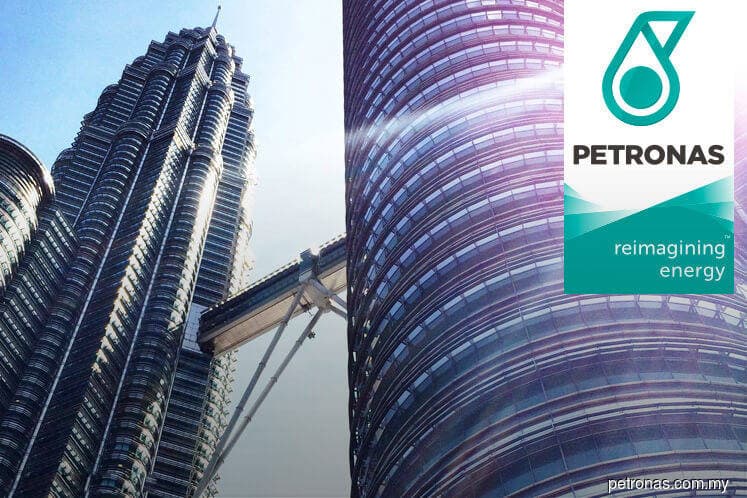
This article first appeared in The Edge Financial Daily on December 12, 2018
KUALA LUMPUR: Petroliam Nasional Bhd (Petronas) has raised its assumed oil price on a planning basis to between US$60 (RM250.80) and US$70 per barrel (bbl) for 2019, according to the latest edition of the Petronas Activity Outlook (PAO) for the 2019-2021 period published yesterday.
This is higher than its 2018’s assumption of US$50-US$60/bbl used in the PAO 2018-2020 published last year.
While the assumption is “prudent”, according to the company — dated Brent averaged US$72/bbl between Jan 1 and Dec 7, 2018 — it still underlined the national oil company’s upward revision of its 2019 activity outlook for key segments in the oil and gas sector, compared with projections in last year’s report.
Among the sectors it seems more optimistic about are drilling and marine vessels in the upstream segment as well as downstream plant turnaround activities.
An analyst told The Edge Financial Daily the upward revision of work activities is “expected”, based on Petronas’ higher oil price assumption.
“Companies like Velesto Bhd, which is in the drilling segment, has previously guided there would be improved tenders in the market. On the whole, the upward revision of work activities [from 2018 assumptions] is not a big surprise,” he added.
However, Petronas noted that the outlook report may “include activities which may have been contracted out, based on specific activity requirements”.
More notable in this report is the fact that Petronas has shared, for the first time, a list of major contracts in key categories and its associated services that it expects to be rolled out in the three-year period.
More activities seen in drilling, marine vessels, decommissioning
For example, the overall contracts it expects to be issued in 2019 include distributed control systems, control valves, and transmitters for offshore fabrications; flexible pipes; coating and painting services, as well as insulation services.
Also highlighted is its expectation of more decommissioning activities in the offshore upstream segment in Malaysia, which it said presents an “interesting” growth opportunity.
Compared with its previous projection, Petronas has generally revised upward the activity outlook for the drilling segment, going by the expected number of jack-up rigs required for the three-year period — which is at high-teens and almost double its PAO 2018-2020’s projection.
Petronas also has a better outlook for marine vessels on the back of an expected pickup in drilling activities in the period. It raised the expected number of vessels required by the Malaysian upstream sector by around 20 across the categories of vessels — comprising anchor handling tug supply, platform- and straight-supply vessels, as well as fast crew boats — for the three-year period.
The outlook for carbon steel line pipes and pipeline installations has been tweaked upwards for 2019, with more jobs spread out into 2020 and 2021, compared with uncertainties projected previously.
Based on the report, flexible pipes will also see a higher take-up of 24-26 kilometres (km) in 2019, as will corrosion-resistant alloy line pipes, which will increase to 25-30km in 2020.
Industry players may also want to look out for what Petronas has termed the “near future” expiration of the frame agreements for both line pipes and flexible pipes.
Compared with the previous report, Petronas has increased, albeit slightly, the expected man-hours for both hook-up and commissioning activities, as well as maintenance, construction and modification works, for the whole three-year period.
The players can also expect more decomissioning activities in the offshore upstream segment.
Decommissioning is an activity to restore a previously producing site to a safe and environmentally stable condition, and comprises well abandonment to prepare a well to be closed permanently, and upstream facilities decommissioning once they reach the end of their production life cycle or when there is insufficient hydrocarbon to make production activities commercially viable.
Particularly on well abandonment activities, Petronas projected those to involve around 50 wells in 2019, followed by around 40 wells in 2020 and around 60 in 2021.
“Decommissioning in Malaysia presents an interesting growth opportunity. The activities are expected to intensify as considerable assets have been operating beyond 40 years,” the report said.
Among these aged assets are some 11% of 353 offshore platforms; 8% of 10,235km worth of pipelines; and 11% of 3,935 well strings.
In the downstream sector, Petronas has increased the number of expected plant turnaround activities in 2019, with projected man-hours more than doubled to 8.1 million from the previous projection of 3.5 million. Turnaround activities, however, are expected to slow in 2020, before recovering the year after.
Global oil market ‘on path to recovery’, but risks remain
On the global oil market, Petronas said that while it is “on the path to recovery”, certain risks remain in place.
Citing data from the International Energy Agency, Petronas pointed to how monthly crude and petroleum product stocks for Organisation for Economic Co-operation and Development countries had risen to just under 2.9 billion barrels — nearing its five-year average level, which indicated an oversupplied market.
It also pointed to four main factors that could affect the oil market. The first two are the reinstated US sanctions on Iran — which could remove between one million to 1.5 million barrels per day (bpd) of oil from the market — and geopolitical instability in key oil-producing countries, such as the economic crisis in Venezuela, where production has fallen by one million bpd presently from January 2016 levels; the series of attacks at Libya’s and Nigeria’s oil facilities; and natural declines in Angola.
The remaining two factors are Opec and non-Opec production coordination and spare capacity, and the risk of a slowdown in oil demand amid stronger oil prices and escalating trade tensions between the US and China.